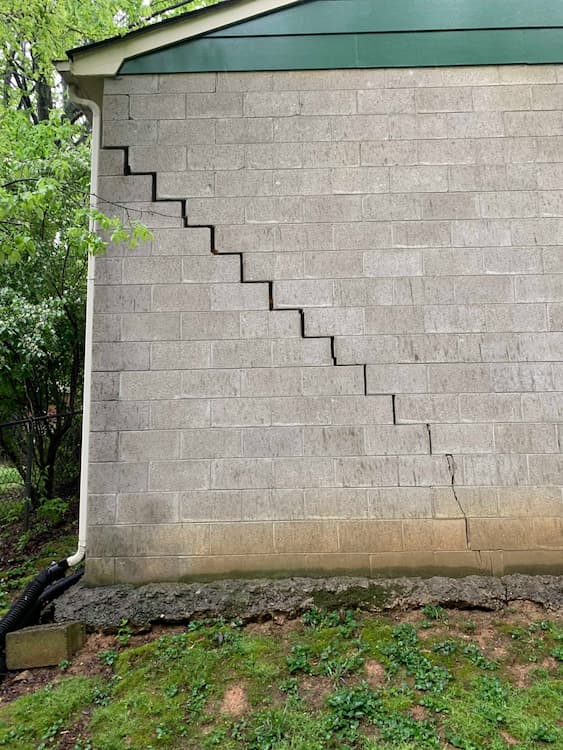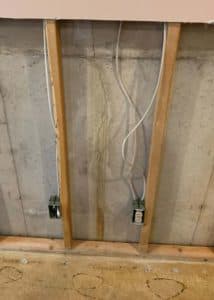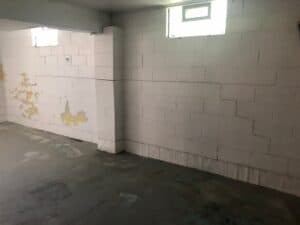
Originally posted 5/7/21, updated 12/15/22
Foundation repairs are not cheap. I’ve emphasized in a number of our blogs that making small repairs early can translate to significant savings later. Like most of you, I have to watch my budget closely. I understand that It can seem excessive to spend $1,000-1400 repairing cracks in your foundation. But if you leave a crack untreated, it can gradually widen and threaten the stability of your home’s structure. Those repairs can cost you $6900-9400, depending on the problem.
So let’s say you’ve “bought into” my argument that you should invest in foundation repairs. You’re doing your research first; you want to know that you’re getting the most bang for your buck. You want a solid warranty- an assurance that you’re not going to have to spend this kind of money again later. Because if you’re going to spend your hard-earned money, you want the repair to last.
We understand your concerns. Acculevel is a family-owned and operated company that specializes in waterproofing and foundation repair. We offer some of the best warranties in our industry, and we’ve been helping homeowners protect their greatest investment since our start in 1996. Throughout our service area we’ve repaired over 30,000 homes, and we confidently warranty the majority of our repairs for the life of the structure.
In this article, we’ll review the major types of foundation repairs, clarify which ones are permanent, and where you can learn more about each one.
Honestly? No. Crack repairs by themselves are always going to be a short-term fix, because the forces that caused them still remain. A great example of this is a hairline crack that is letting in water.
 This photo was taken by an Acculevel project advisor during a free estimate appointment. The hairline crack was discovered when water seeped in, wetting both drywall and carpet.
This photo was taken by an Acculevel project advisor during a free estimate appointment. The hairline crack was discovered when water seeped in, wetting both drywall and carpet.
We repaired this crack using an epoxy, which we believe is the most effective method. And we guarantee this repair will hold for at least the next 5 years. No one in our industry can offer a long-term warranty on crack repair because of what causes most cracks to form: hydrostatic pressure and uneven settling.
Concrete is porous, and can expand and contract with weather changes. This slight movement is sometimes enough to create very thin hairline cracks. If these are repaired promptly, the epoxy can keep them from expanding or seeping water for a good length of time. But once a crack lets water in, hydrostatic pressure becomes a factor.
In brief, hydrostatic pressure forms when there is an excessive amount of water in the soil around your house. Dirt can only absorb so much moisture; the water left after that pools up and pushes against the foundation.
This pressure will dissipate, then return as the seasons change. Each time there’s a major rainstorm or other flooding event that puts too much water in the ground, that water will again try to force its way into your home. It will, inevitably, widen an existing crack or create new cracks.
If you want to prevent this type of hairline crack from forming, worsening, or multiplying? You will need to address the hydrostatic pressure. The best way to do this is to install an interior water drainage system.
 This is an illustration of how Fast Track water drainage is installed in a finished basement.
This is an illustration of how Fast Track water drainage is installed in a finished basement.
Waterproofing doesn’t prevent water from getting into your home. The drainage system instead manages the water before and during its intrusion. The water that pushes at your foundation will find its way in- but into the drainage track, not your basement. The drainage system then routes the water out and away from your house through a discharge line. We warranty water drainage for the life of your structure, so it is essentially permanent.
Let’s say you look at your budget constraints, and you decide epoxy repair is good enough for now. But next summer, you get record rainfall in your area and a new crack forms- this one is longer, wider, and gets bigger with every new rain.
 This photo was taken by an Acculevel project advisor during a free estimate appointment. There are multiple cracks in the wall and the column is starting to bow inward.
This photo was taken by an Acculevel project advisor during a free estimate appointment. There are multiple cracks in the wall and the column is starting to bow inward.
The crack in the picture above is a long horizontal crack, with zig-zag cracks forming around it. It’s at its worst along the support column, because you can clearly see the gap in it widening and starting to bow.
A bowing basement wall threatens the health and stability of your home. It should be repaired immediately, especially in the circumstances I described in my example. The more pressure applied to that wall, the more it will bow, until it could actually fall inward and collapse. Trust me- if you don’t want to pay for waterproofing or stabilizing a bowing wall? You really, really don’t want to spend $20,000 having a wall rebuilt.
If you have a crack in your basement wall that is starting to bow, please get it repaired promptly. Bowing wall repairs should be permanent; Acculevel offers three different repair methods, and they are all warrantied for the life of your structure.
All homes will settle, to some extent. That’s a basic part of gravity- the weight of your home presses down, into the soil below. But there are times when the home doesn’t settle evenly; maybe the soil is a little different in the southwest corner, or the water running off the driveway is eroding around the north wall. Uneven settling can be caused by a number of factors, and we discuss the warning signs to look for here.
For now, what you need to know is that settling has an incredibly negative impact on the structure of your home. Think about the components of your home- it’s made of wood, concrete, drywall, maybe some steel. These are not flexible materials. But when one section of your foundation is lower than the rest, it is pulling on all the other parts of your home. This causes cracks.
 This photo was taken by an Acculevel project advisor during a free estimate appointment. You can clearly see the stair-step crack that has formed, as the corner of the foundation sinks and pulls at the structure.
This photo was taken by an Acculevel project advisor during a free estimate appointment. You can clearly see the stair-step crack that has formed, as the corner of the foundation sinks and pulls at the structure.
This type of crack can’t be fixed with epoxy. Settling needs to be repaired by installing helical piers under the foundation, to stop it from settling any further. The best result would be that the piers can be used to lift the corner; once the crack is minimized it can be filled. The crack repair would not be permanent- epoxy or mortar can degrade.
Keep in mind that patching this crack without installing piers will not stop the crack from widening. The more the foundation settles, the wider the crack will become. Patching a settling crack is like putting a band-aid over a cut that needs stitches. You’re covering the problem, instead of “healing” it cleanly. But helical piers are permanent; Acculevel provides a life of structure warranty that asserts properly installed piers will not move.
[box type="info"] A note to my readers: it is of critical importance that only a qualified professional contractor assesses and installs piers at your home. If the piers are not properly placed, they will not address the issue and your money will be wasted. [/box]
If you have more questions about foundation repairs, I would like to encourage you to check out our Complete Foundation Guide. This is a detailed review of what causes all types of foundation issues, repair methods, and costs. We developed this guide to serve as an ongoing resource for homeowners, so bookmark it, read the section(s) that apply to your home right now, and reference it any time you need more information.
Please find an experienced local foundation company, and make an appointment. We strongly encourage you to check that your contractor is reputable, insured and accredited by the Better Business Bureau.
If you live in our service area, please contact Acculevel. When you fill out our contact form, one of our friendly call center employees will reach out to you within 48 hours. They will schedule an appointment for you with one of our knowledgeable and experienced project advisors. The project advisor will evaluate your home and address your concerns, then recommend a whole home solution to keep your home strong and healthy for years to come.
[DISPLAY_ULTIMATE_SOCIAL_ICONS]